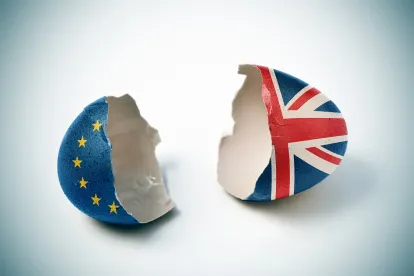More than a year has passed since the UK voted to withdraw from the European Union without much clarity ever given to businesses on what the terms of the intra-EU trade with the remaining EU27 would look like post-March 2019. This has led to many of our clients planning for the worst possible option, i.e. anticipating that at midnight on March 2019, the UK would formally have withdrawn from the EU without an arrangement in place.
However, on 15 August 2017 – a bank holiday for a large part of Europe − the UK government released its most-anticipated “Future customs arrangements paper”: the first of a series of papers setting out the UK government’s thinking on its future relationship with the EU.
We took advantage of a relatively calm week to propose a few thoughts, our immediate reactions to the key issues and questions arising out of the UK government’s strategy. As you will see, the debate is just beginning.
Timing of the UK Proposal
The legal and practical considerations of the UK leaving the EU Customs Union in a post-Brexit world was not much discussed during the referendum campaign and it took time for the government to formally address the issue and start engaging with UK businesses regarding this. This has led us lawyers, and our clients, to prepare for all eventualities, including a possible “no deal” situation where the UK would leave the EU Customs Union without any arrangement in place. This is a solution feared by many in the UK, as it would mean very cumbersome procedures and controls with the EU27, without facilitation. In any event, there is insufficient time before March 2019 to install the customs clearance facilities that would be necessary. This would be particularly damaging for companies that operate on a “just in time” basis and who do not have the capacity and budget to carry those additional tasks and the inevitable delays that would result.
In this respect, the publication of the customs proposal by the UK government can only be welcomed. Presumably, it is intended to address the concerns at home and in Brussels that the UK government did not have much of a customs plan at all. In an early statement, the European Commission confirmed the optimism by stating that it will study the content of the customs proposal, before releasing its own proposal in the next few weeks. “The clock is ticking and this will allow us to make progress” − a few rays of sunshine in an otherwise grey August. Nonetheless, the position paper is principally a statement of broad aspirations rather than a concrete plan for borders that are as seamless and frictionless as possible. The improvement of IT systems for customs clearance remains an objective of countries the world over, but the practical, political and legal issues are not dealt with in the paper.
The first and obvious hurdle lies in the ability for the UK to push these discussions at the next round of talks with the EU, scheduled for the end of August. On this point, the EU27 always made it clear that the trade negotiations would progress if and when sufficient progress was made on the terms of the UK’s withdrawal (also known as “first we withdraw, then we negotiate”). And the budget settlement and citizen’s right proposals are not finalised as yet.
What about Ireland? Interestingly, paragraphs 43-45 of the proposal look at the land border with Ireland, an issue that the EU considers to form part of the withdrawal negotiations. By conditioning the customs proposals described in this paper as “first steps” to meet the UK government’s objectives to “trade across that land border” as seamless and frictionless as possible, it is clear that the UK government intends to address it only in the wider context of a wider EU/UK customs discussion. In other words, the government does not intend to talk about Ireland if the customs transition and future partnership is not addressed. Note that this was swiftly contradicted by Michel Barnier, who tweeted shortly after the publication: “the quicker #UK & EU27 agree on citizens, settling accounts and #Ireland, the quicker we can discuss customs & future relationship” − a bon entendeur, but Michel ignores the fact that the Irish border issue is about customs clearance (as well as immigration controls) so that the two cannot logically be considered separately. [See Ireland/NI Position Paper published 16/8/17]
Transition Period
In the paper, the UK government states that it “believes that a model of a close association with the EU Customs Union for a time-limited period” is a necessary step to then implement what it sees as its two options for its post-withdrawal arrangement (see further below).
This acceptance of a transition phase is a welcomed move, yet its contours are still completely legally unshaped. Under EU law, there is no such thing as “close association membership” with the EU Customs Union that could find legal basis in the EU treaties. Using the much-debated example of the EU-Turkey customs union agreement, in addition to providing for a common external tariff for the products covered, the customs union foresees that Turkey is to align to the acquis communautaire in several essential internal market areas, notably with regard to industrial standards. If the UK could consider association membership, while un-aligning itself from the acquis communautaire, it remains to be seen if this is a solution that the EU could consider. The position paper makes no reference to the internal market or the possibility of continued membership for the transition period.
The UK government seems to acknowledge that whilst this interim close association membership will not prevent negotiations with third countries, it would curtail its ability to sign new trade agreements with non-EU countries. This does not change much from the status quo where scoping discussions would occur but no agreement could be reached. How this actually differs from current customs union membership is a question. As ever, the legal devils will lie in the actual details of this interim deal sought with the EU (membership fees, enforcement mechanism, dispute resolution, timeline, destination of duties collected, etc.). It is difficult to see how the European Court of Justice could be excluded from such arrangements.
The Future Customs Relationship
The UK government identifies two options for after the transition period:
-
A “new customs partnership … which would negate the need for a customs border between the UK and the EU”
-
A new “highly streamlined customs arrangement”
It is not clear if those models are part of the same solution or if one is preferred to the other. It is clear, however, that in those trading models, the UK trades with the EU as a third country and is completely outside of the customs union. In practice, this means it will no longer share the EU common external tariff and customs controls with EU27 member countries will be re-imposed. Upon expiry of the associated membership status, traders will face tariff barriers and will, therefore, be liable to pay customs duties upon entry into the UK and into the EU Customs Union. Once the UK breaks away from the EU, and if it were to keep the common external tariff, any company moving parts and goods between the EU and the UK would face a tariff charge every time a border was crossed. Therefore, UK-EU trade will have to proceed according to the Most Favoured Nation
(MFN) principle – absent any transitional arrangement.
To mitigate this cliff-edge situation, the first model tries to simplify customs arrangements so that they are as frictionless as possible. This is done through continuing “some existing arrangements”, “reducing or removing” other barriers and a variety of IT solutions. The paper suggests a waiver on entry and existing requirements, a mutual recognition agreement for Authorised Economic Operators (AEOs), technology-based solutions for roll-on/roll-off ports and some other initiatives. At present, only companies established within the EU’s customs territory may apply for the AEO status. The regime provides such benefits as easier admittance to customs simplifications and recognition as a secure and safe business partner does across the union. Whilst a mutual recognition of AEO status could mitigate the impact of lengthy procedures for UK-EU trade, there will still be customs checks attached to this status.
What the paper does not suggest is how much this system would cost for both the UK and the EU taxpayers and how long it will take to put this into effect. It also misses an important point, i.e. those national customs authorities operate under a unified legal framework (the Union Customs Code) but using very different customs systems. If systems can be streamlined in the UK, benefit for traders would only arise if facilitation arrangements can be sought with all EU27 customs authorities − a daunting task that is likely to last for years, experts say. All EU member states would need to adopt the new system, at a substantial cost. It is far from clear that they would all be willing to incur this expense for the benefit of the UK.
With respect to the new customs partnerships, the paper proposes to mirror the EU customs approach at its external border, at least as far as imports from third countries to the EU are concerned, apparently to remove the need for intra EU and UK customs checks. It acknowledges that this is an “untested and unprecedented approach” and it does not provide an explanation of how it would work. It seems that this would mean that the UK would act as a tax collector for the EU and still re-distribute that part of its duties collection to the EU budget.
It is to be hoped that both sides in this difficult negotiation will accept that a simple exit from the EU Customs Union in March 2019 is completely impractical for both sides. France will not have installed facilities for customs clearance in Calais and it is likely that imports and exports between the UK and the EU would grind to a halt.




 />i
/>i

